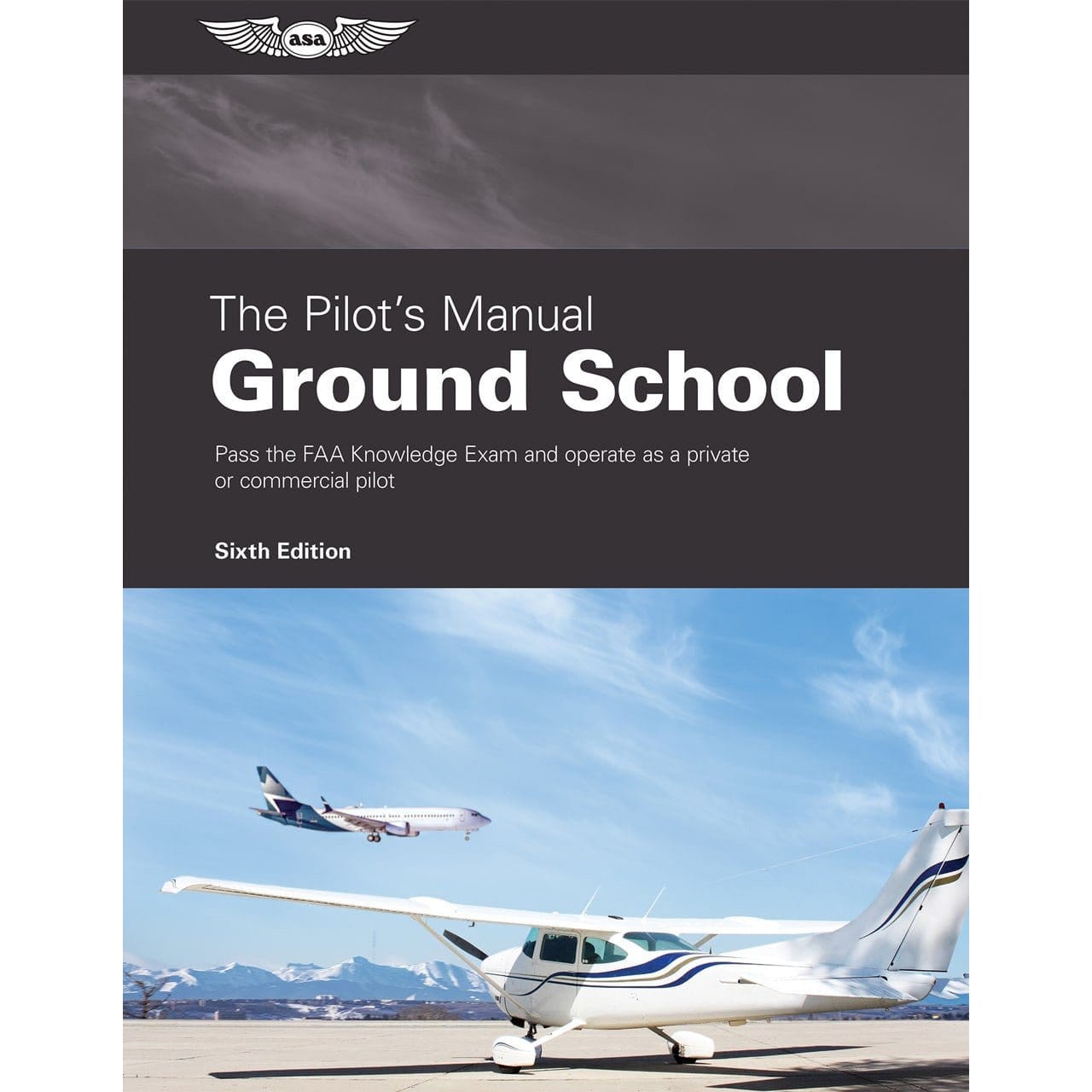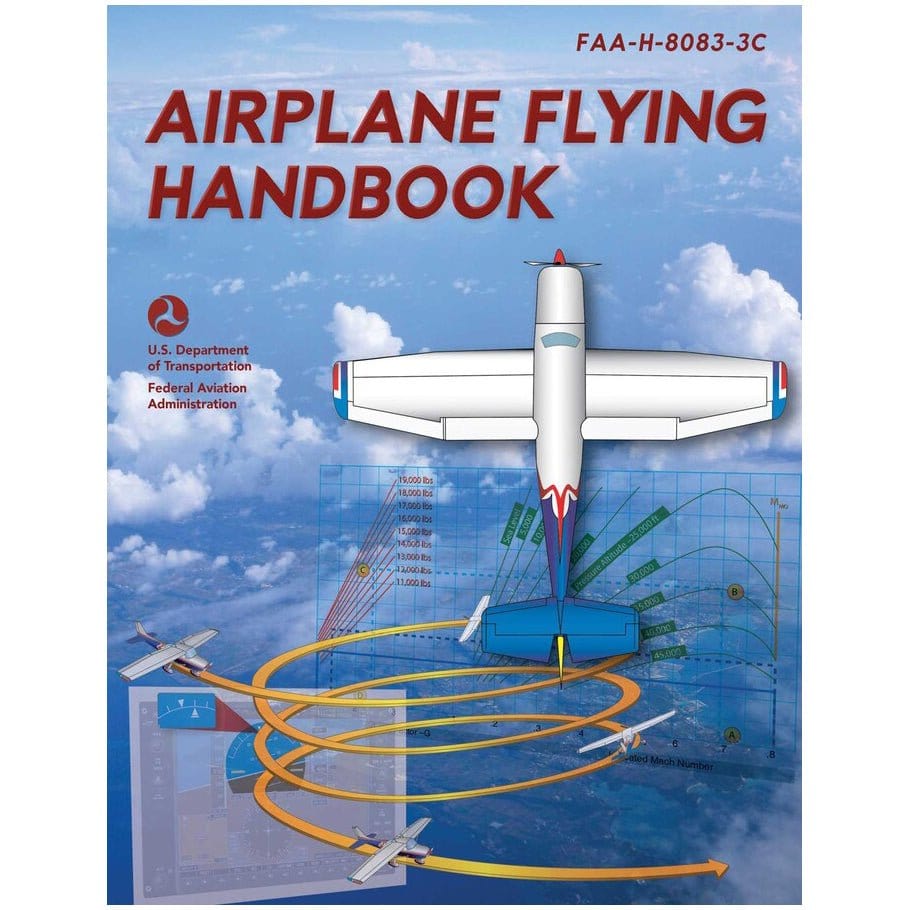Altitude is simple. It’s just your height above the ground, right? Not if you’re a pilot.
There are many types of altitude in aviation. New student pilots must learn what each kind of altitude is, how it is measured or calculated, and how to use it during flight.
Today we are running down the whole list to create a “types of altitude explained for pilots” guide. We’ll start by covering the most used and referenced types then wrap up with a few you may never have even heard of.
 How Many Types of Altitude are There?
How Many Types of Altitude are There?
Most pilot training articles talk about the 5 types of altitude that are part of formal pilot training and testing, but there are, in fact, many more.
Here is a list of the types of altitude we will be explaining today:
- Indicated Altitude
- Pressure Altitude
- Density Altitude
- True Altitude
- Absolute Altitude
- Pivotal Altitude
- Transition Altitude
- Relative Altitude
- Geometric Altitude
- Calibrated Altitude
 5 Types of Altitude Pilots Are Tested On
5 Types of Altitude Pilots Are Tested On
At a minimum, pilots need to know and understand five types of altitude to pass their written test and check rides. Here are the definitions, measurement methods or calculation formulas, and uses of each of the key types of altitude.
 What is Indicated Altitude?
What is Indicated Altitude?
- Definition of Indicated Altitude: Indicated altitude is the altitude reading shown on your aircraft’s altimeter. It is an extrapolated estimation of your elevation above sea level and is corrected for atmospheric conditions.
- How Indicated Altitude is Measured: Your plane’s pressure altimeter measures the air pressure at your altitude and adjusts using your altimeter setting input to determine your altitude.
- Uses for Indicated Altitude: Indicated altitude is used to maintain aircraft separation. It is also required for pilot math equations including calculating other types of altitude.
 What is Pressure Altitude?
What is Pressure Altitude?
- Definition of Pressure Altitude: Pressure altitude is the indicated altitude calibrated for your elevation above the standard datum plane (a theoretical atmospheric level where the atmospheric weight is 29.92” Hg). You may also hear it referred to as corrected barometric altitude.
- Pressure Altitude Calculation: Prior to takeoff, enter the current local barometric pressure reading into your altimeter settings. Your altimeter gauge will now show your pressure altitude.
Note: When flying at 18,000 feet and higher, for standardization, pilots set the altimeter to 29.92 inches of mercury (standard pressure altitude) rather than using local barometric pressure readings.
- Uses for Pressure Altitude: Pressure altitude is used when making aircraft performance calculations (like density altitude) and for standardizing high altitude flight levels. It is also used for determining when supplemental oxygen should be worn.

Pro Tip: Today’s pilots can monitor the pressure altitude right from their wrist. The advanced Garmin D2 Air X10 is a stylish, easy to wear smart watch designed for pilots. Along with navigation, weather, airport information, flight logging, health monitoring, and more, the Air X10 also houses a barometric altimeter.
 What is Density Altitude?
What is Density Altitude?
- Definition of Density Altitude: Density altitude isn’t truly a measure of altitude. Rather, it is air density expressed as an altitude. Density altitude is the altitude equivalent your aircraft performs as though it were flying at regardless of your true altitude. A higher density altitude means poorer aircraft performance.
- Density Altitude Formula: Density altitude is pressure altitude corrected for non-standard temperature and humidity conditions. The rough estimation for density altitude is 4 feet per degree Celsius of difference from standard temperature for every 1,000 feet above the reporting altitude.
- Uses for Density Altitude: Density altitudes help you calculate what performance to expect from your aircraft given current conditions. Among other things, density altitude is used when determining takeoff distance, climb rate, and weights. Density altitude increases on hot days and decreases on cold ones. Pilots flying in the summer pay close attention to density altitude, especially during mountain flying.
 What is True Altitude?
What is True Altitude?
- Definition of True Altitude: True altitude is a measurement of your aircraft’s vertical height above mean sea level (MSL).
- True Altitude Formula: Indicated Altitude + (ISA Deviation × 4/1000 × Indicated Altitude)
- Uses for True Altitude: True altitude is used on aeronautical charts to mark airways, terrain features, obstacles, and more.
 What is Absolute Altitude?
What is Absolute Altitude?
- Definition of Absolute Altitude: Absolute altitude is the vertical distance measurement from your airplane to the ground. It is expressed in feet above ground level (AGL).
- Absolute Altitude Calculation: The formula for absolute altitude is true altitude – terrain elevation.
- Absolute Altitude Measurements: Absolute altitude up to 2,500 feet AGL can be gauged using a radar altimeter. This type of altimeter sends a radio beam down to the ground and measures how long it takes for the beam to be reflected to the plane. This reading is used to generate an absolute altitude value.
- Uses for Absolute Altitude: Absolute altitude is used to confirm vertical separation from terrain. The phrase “altitude is safety” refers to absolute altitude. The more distance you have between your plane and the ground, the more recovery time you have If something goes wrong.
 Other Types of Altitude
Other Types of Altitude
This second batch of altitude types aren’t as commonly referenced and don’t appear on most “types of altitude” lists for pilots, but we still use them frequently.
What is Pivotal Altitude?
- Definition of Pivotal Altitude: In our Pivotal Altitude Explained (Everything You Need to Know) post, we explained that pivotal altitude is “the specific altitude at which, when an airplane turns at a given groundspeed, from the pilot’s point of view, the plane’s wingtip seems to pivot around a single fixed reference point on the ground.”
- Pivotal Altitude Formula: Groundspeed in miles per hour²/15 or groundspeed in knots²/11.3
- Uses for Pivotal Altitude: Learn precision aircraft handling and master the ground reference maneuver called “Eights on Pylons.”
What is Transition Altitude?
- Definition of Transition Altitude: Transition altitude, or TA, is the altitude above MSL at which pilots change their altimeter setting from local barometric pressure to the standard pressure setting of 29.92.
- Transition Altitude: Transition altitude is 18,000 feet MSL, also known as flight level 180 or FL180.
- Uses for Transition Altitude: Transition altitude is used to ensure all aircraft flying in flight levels are using the same altimeter settings so ATC can safely maintain pressure altitude-based separation.
What is Relative Altitude?
- Definition of Relative Altitude: Relative altitude is your altitude in relation to the altitude of another aircraft or other point of comparison.
- Uses for Relative Altitude: Comparing the relative altitudes of two aircraft helps confirm vertical separation or positioning in holding patterns and landing sequences.
What is Geometric Altitude?
- Definition of Geometric Altitude: Geometric altitude is a computed aircraft altitude used by onboard EGPWS Terrain Awareness and Display systems.
- Geometric Altitude Formula: Geometric altitude calculations are done by the computer using GPS altitude with vertical figure of merit (VFOM) and RAIM failure indication, standard altitude, and radio altitude. Ground speed, roll angle, position, static air temperature, and pressure altitude are also used if available.
- Uses for Geometric Altitude: Geometric altitude is used to allow a pilot to continue operation and determine altitude when one or more of the standard pilot altitude measurements is not available.
What is Calibrated Altitude?
- Definition of Calibrated Altitude: Calibrated altitude is the indicated altitude when it has been corrected for errors including static pressure error, instrument error, and installation error.

Clearing up altitude confusion
Before we wrap up, here are answers and clarifications on some of the more confusing altitude concepts.
True Altitude vs Absolute Altitude
The difference between true altitude and absolute altitude is that true altitude relates to your vertical distance above sea level (feet MSL) and absolute altitude is your vertical distance above the terrain (feet AGL).
Are true altitude and indicated altitude ever the same?
True altitude vs indicated altitude can be a bit confusing. During real life flights, true and indicated altitudes are very rarely the same, but it is possible. For these two altitudes to identical, you would need to be flying under standard pressure conditions.
It’s also worth noting that indicated altitude is more likely to differ drastically from true altitude when you are flying in colder temperatures. In very cold conditions, your indicated altitude will be higher than your true altitude. This can be dangerous and result in controlled flight into terrain (CFIT) if pilots aren’t observant.
What is the difference between density altitude and pressure altitude?
The names sound similar, so new student pilots may be confused about density altitude vs pressure altitude. Remember that density altitude takes pressure altitude and then corrects for the effects of temperature and humidity.
More Altitude-Related Reads
- How to Read an Altimeter (Complete Guide)
- Pitot-Static System: How does it work?
- Coffin Corner: Reaching Beyond the Limitations
- Ground Effect: Learning to Use it To Your Advantage
It’s Your Turn
When you were a student pilot, which type of altitude was the most confusing for you to understand? Any types that still trip you up today? What tips do you have for remembering the differences between them?







